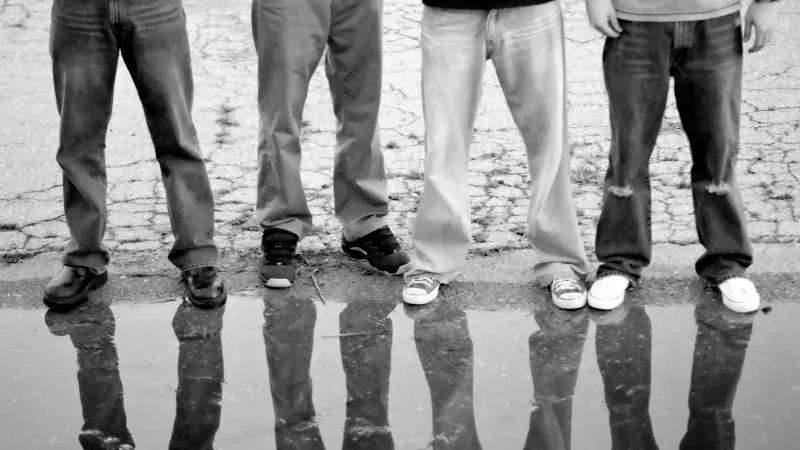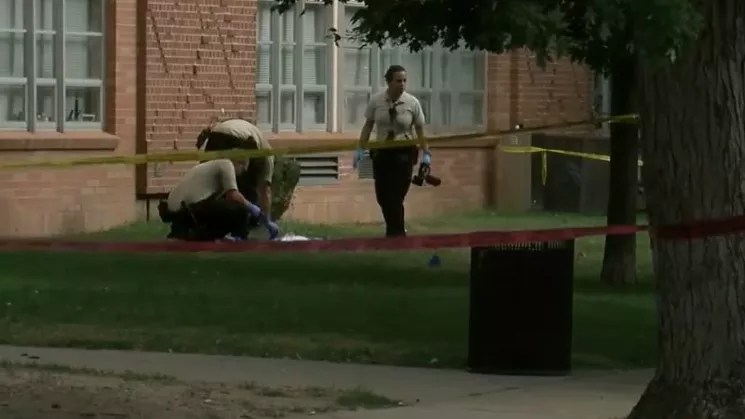
Aestusx/Getty Images

Audio By Carbonatix
North Denver neighborhoods near the RiNo Art District, including Cole and Whittier, have undergone massive changes over the past several years, with gentrification displacing Hispanics and other locals who can no longer afford to live in their longtime homes. But despite this controversial transformation, gangs remain active in the area, as the experience of two metro-area sixth-graders demonstrates.
Multiple times this month, the pair, both kids of color who we’re not identifying in order to protect their safety, have been cornered and accosted by gang members in the blocks surrounding a Cole recreation center. The gang members are actively trying to recruit tweens and young teens, and are focusing on those known for being athletic. Impressive kicks are also a lure, as are iPhones. It’s unclear whether the gang is new or an offshoot of an established group, but the bangers who’ve been trying to jump the sixth-graders into their crew dress distinctively, preferring white clothing rather than the more commonplace red or blue.
White graffiti has started showing up in the neighborhood as well, in what may or may not be an unconscious commentary on the racial makeup of many new residents.
Denver Police Department Division Chief Jeff Martinez, the District 1 commander, is unfamiliar with this set, but he’s isn’t shocked to hear such reports. According to DPD stats, gang-related crime for the city as a whole is down 9.5 percent from this time last year, and Martinez believes that several recently launched programs, and a new focus on getting to the root cause of such activity rather than only dealing with it when it’s too late, are a big reason why. But while he notes that “traditional gang strongholds in north Denver have pretty much dissipated in conjunction with the demographic shifts in those neighborhoods,” they haven’t been eliminated entirely. In his words, “It’s still happening.”
Talking about the tensions caused by the transition in north Denver can be tricky. Ask Reverend Leon Kelly, a veteran anti-gang activist who has occasionally been accused of racial insensitivity for sharing the facts about the area as he understands them. In 2015, following an upswing in north Denver gang violence, including several major shootings in Cole and Park Hill, he noted that “people have been asking me why we’re seeing this resurgence to the degree we are. And I’ve said one of the contributors is the migration in the neighborhood. Thirty years ago, that neighborhood used to be all black. Then, twenty years ago, it was majority Hispanic or Latino. Now, there’s a majority of whites moving in.”
Back in the day, he continued, “the blacks and the browns could coexist because there was room for each of them to occupy territory. Now, the whites are consolidating, boxing in the blacks and browns, who are trying to hang on to this little bit of space – and that’s forcing them to get closer together, and it’s causing a reaction.”

Investigators outside DSST Cole Middle School following a shooting there on August 28, 2018.
Denver7 via YouTube
Kelly offered an example of the clashing cultures that still rings true today: “Some of my kids have been used to sitting out on weekend nights smoking and drinking, and they think it’s their ‘hood. But now, due to changes in the community, the white people are coming in with their strollers and dogs, and they see these kids hanging out – and they’re not used to it. They want the city to do something about it, and the kids are reacting to that.”
One method the Denver Police Department is using to undermine gang activity involves what Martinez describes as “DNA for guns,” an approach deployed by staffers at its Crime Gun Intelligence Center. “The technology has been around for a bit, but we’ve been able to sharpen our use of it,” he says. “At our crime lab, we have the ability to process shell casings. So when we come across one, whether it’s a case of somebody being injured or just someone shooting off guns in the area, we collect the evidence and put it through a process that lets us determine if there’s a connection with other crimes. It’s a more precise process in how we deal with discharges of firearms. Gun crime is a big problem for this country, and this gives us a way to get in front of it.”
Other tactics are more personal. After a gang-related shooting at DSST Cole Middle School last September that left a student severely injured, Martinez reveals, “we came up with a multi-dimensional approach where we work with Denver Public Schools to try to disengage children that fit into that sixth-grade age, where they’re very vulnerable to stepping into the gang life. We’ve even gotten to the point of designating a school-resource officer for the gang unit that’s going to specialize in leveraging relationships with DPS and certain schools so we can open resources to help these families. Because a lot of times, if you dig deeper, you find out that there are issues in the homes that are making these children vulnerable, and if we deal with those, we may have some success in disengaging the children.”
By looping in school counselors and experts in victim services, “we’re making it more of a non-police response than a police response to these situations. We have a lot of work in front of us, and there’s no way we can do it on our own if there’s any hope for getting to these kids before they take that step into a gang.”
In Martinez’s view, the continuing decrease of gang-related homicides represents another sign of progress. In 2015, the department recorded 23 killings tied to gangs. By last year, the number was down to ten, and the number could fall further. As of August 13, there had been 42 homicides in Denver during 2019. Of those, five were gang-related.
Note that an overnight shooting in Whittier, near 28th and High Street, left one man dead. No determination about cause has been made at this writing.
Granted, some of Denver’s gang members have simply moved to new locations. Martinez says the department’s gang units, which he also praises for helping produce that 9.5 percent decrease in gang-related crime, are keeping their eye on portions of northeast and southwest Denver, and he understands that some outfits appear to have put down stakes in Aurora. In the meantime, he says, “we’re doing our best from top to bottom to slow this down, because the negative effects of gang activity hurt everyone – families, the community, everyone. If somebody’s burying a kid or losing a kid to the penitentiary, that’s something we want to see stop.”